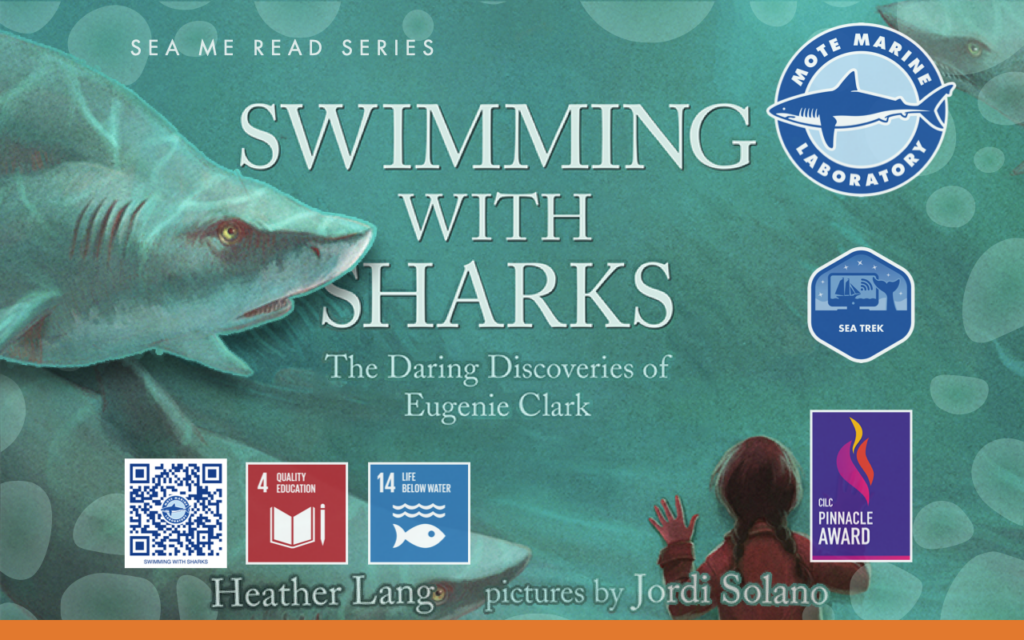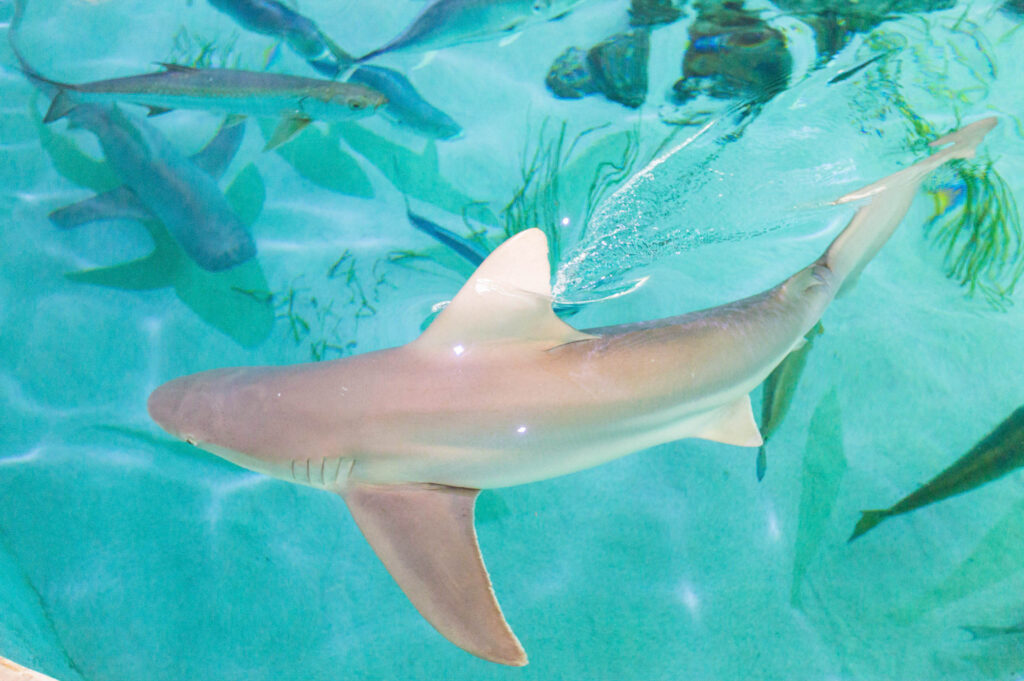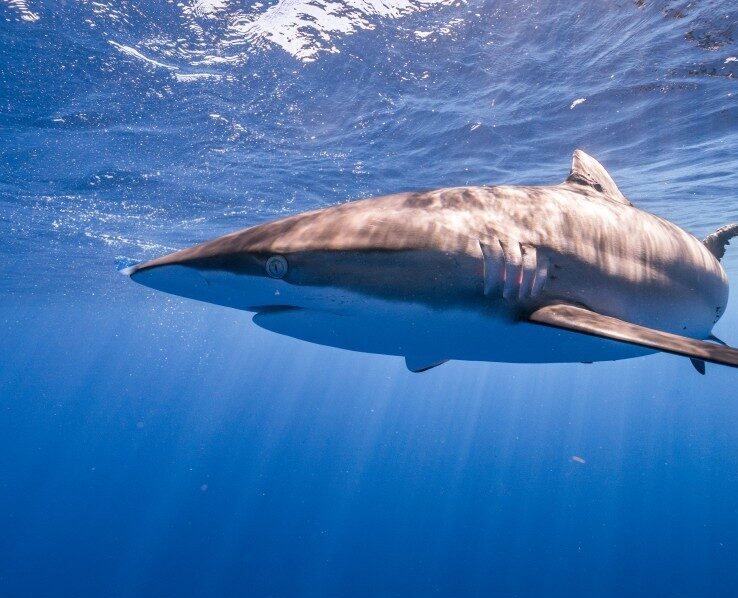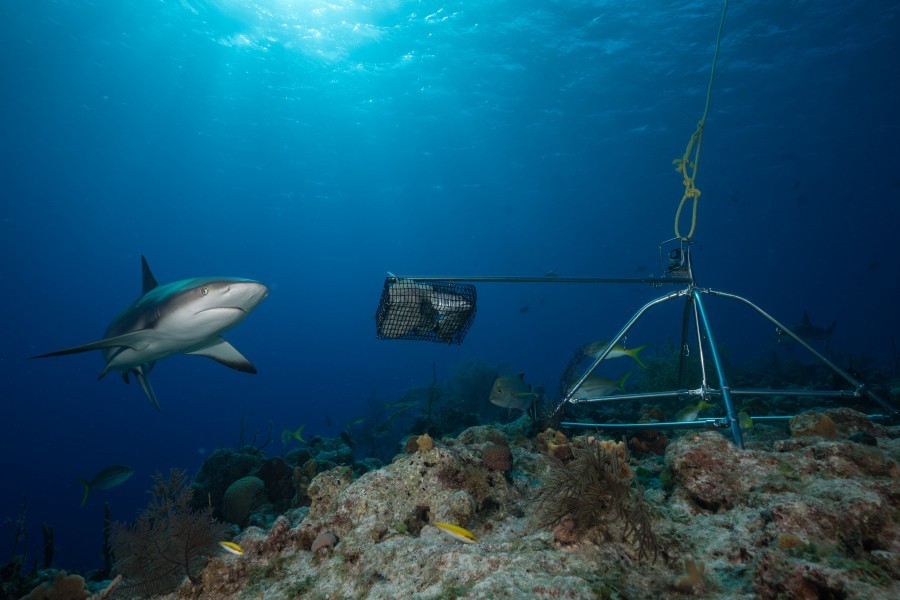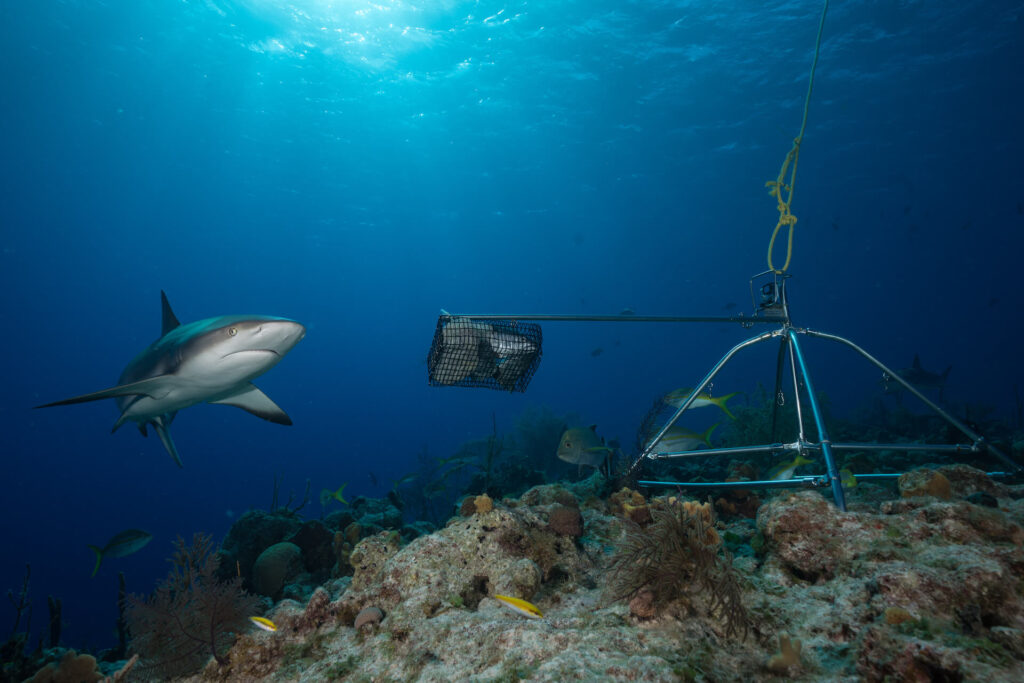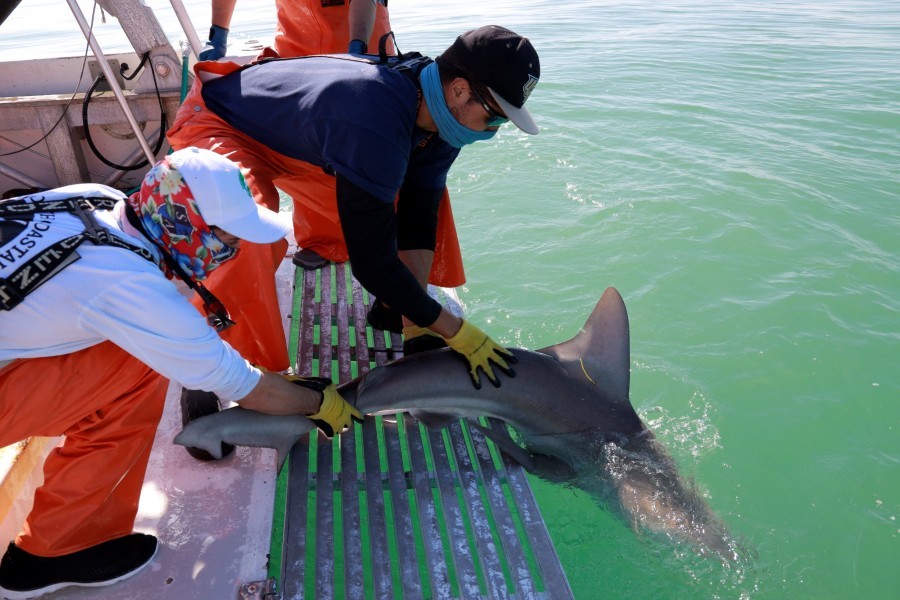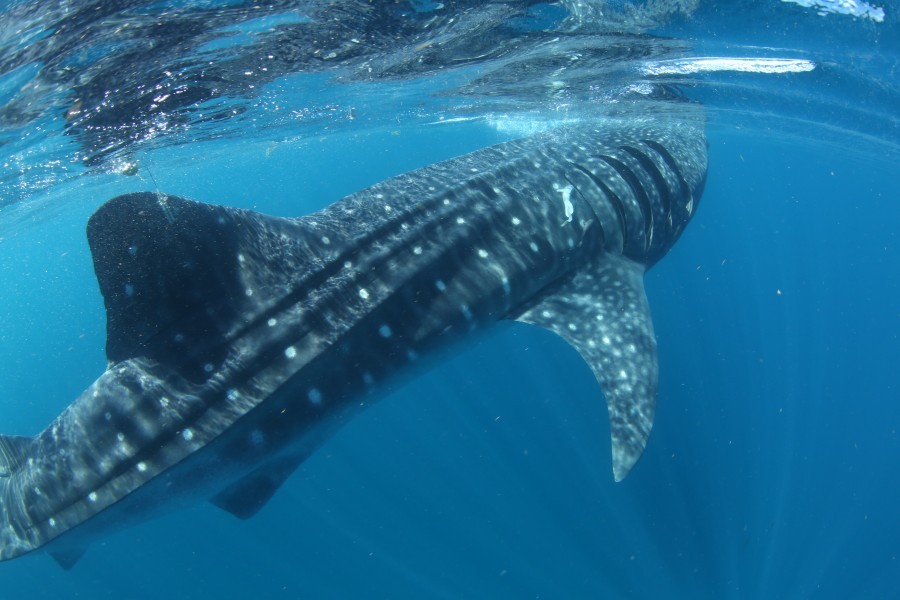Skip to content
You are using an outdated browser. Please upgrade your browser to improve your experience.
Mote Aquarium on City Island, Sarasota, is closed to visitors as we turn our full attention toward preparing to open Mote Science Education Aquarium (Mote SEA).
FAQ about Mote SEA
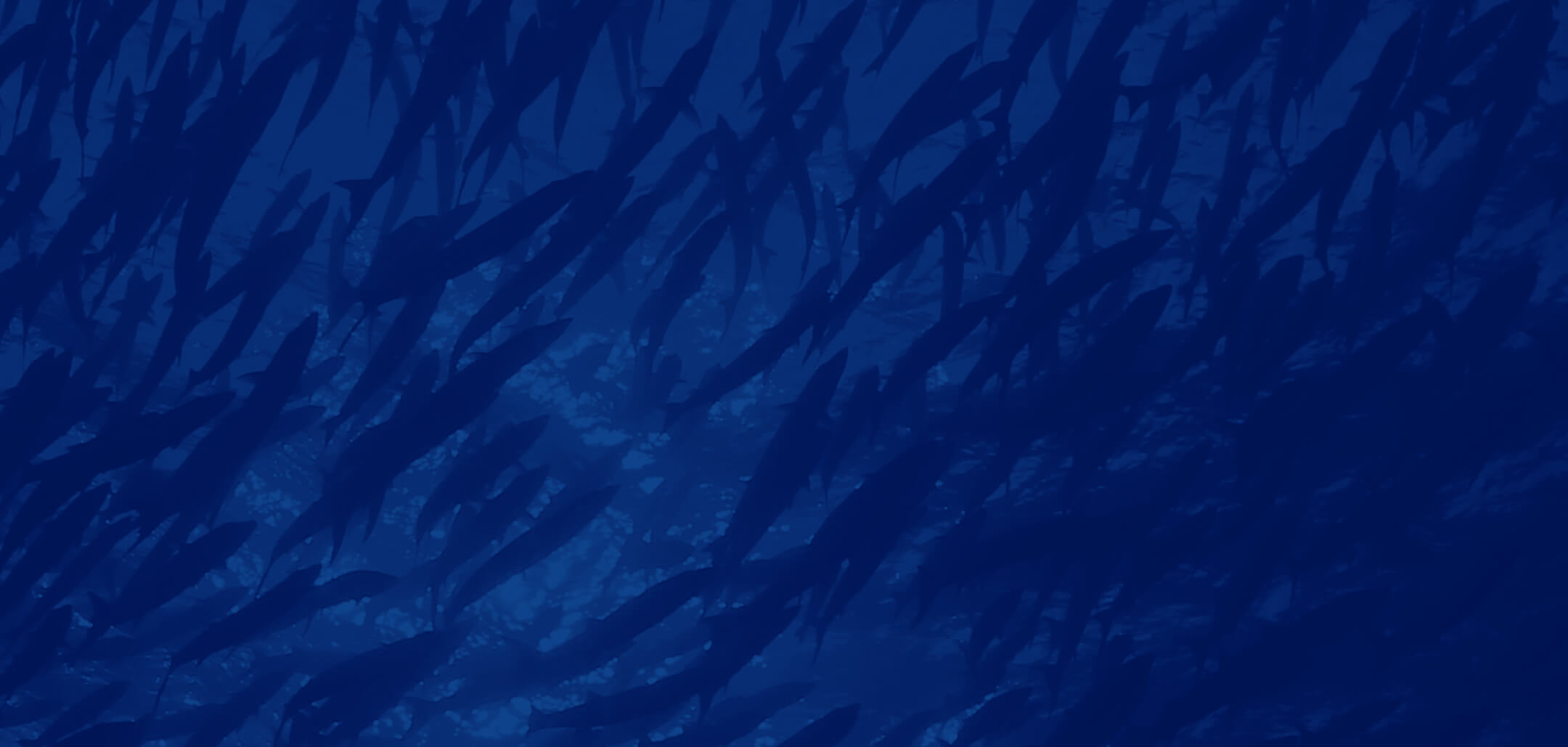
Two sharks were trained to feed at a target which, when pressed, caused a submerged bell to ring. Later they were trained to press the target for remotely placed food. They retained this conditioned response after a 10-week period...
The scalloped hammerhead Sphyrna lewini and the great hammerhead S. mokarran are large, coastal to semi-oceanic shark
species common to waters of the US east coast where they are regularly taken in commercial and recreational fisheries,
particularly...
Help us celebrate the birthday anniversary of Dr. Eugenie Clark.
We will read the story Swimming With Sharks: The Daring Discoveries of Eugenie Clark, in celebration of her 103 birthday. Dr. Eugenie Clark,...
The blacktip shark (Carcharhinus limbatus) is the most
commonly captured species in the
Florida recreational shark fishery.
We aimed to quantify the postrelease
mortality of blacktip sharks and to
determine whether hook type (circle
or...
A number of international and national organizations, both governmental and non-governmental, have jurisdiction or influence over the management of marine fisheries, and hence, over the legal collection of elasmobranchs. It is the...
Thrilling underwater photographs enrich this unique guide to the shallow-water sharks of Florida and the Bahamas. Agile, sleek, and precise, sharks display many qualities we can admire and appreciate. These marvels of evolution have...
The ability to produce estimates of the metabolic rate of free-ranging
animals is fundamental to the study of their ecology. However,
measuring the energy expenditure of animals in the field has
proved difficult, especially for aquatic...
Guatemala, situated in Central America along the eastern Pacific Ocean and the western Caribbean Sea, is a
major regional consumer of elasmobranch (shark and ray) meat during the Roman Catholic Lenten season.
Elasmobranch meat is supplied...
Populations of sharks, including those inhabiting coral reefs, have experienced dramatic global declines. Setting appropriate targets for restoring reef shark populations requires estimates of expected relative abundances in the absence...
In ecosystems, sharks can be predators, competitors, facilitators, nutrient transporters, and food. However, overfishing and other threats have greatly reduced shark populations, altering their roles and effects on ecosystems. We review...
Many shark species have been overexploited for international markets, including fins for shark fin soup in Southeast Asia. Previous studies highlighted the value of large, threatened shark species, regulated under CITES Appendix II....
This study reports on the metabolic rate of the blacktip shark Carcharhinus limbatus and the energetic costs of external tag attachment. Metabolic rates, swimming speed and tail-beat (BT) frequency were measured in a static respirometer...
Rise and dive!
Start your day with our sharks before the Aquarium opens to the public. You and your chums will have a great time sinking your teeth into a light continental breakfast while you learn about our favorite finned...
Decades of overexploitation have devastated shark populations, leaving considerable doubt as to their ecological status. Yet much of what is known about sharks has been inferred from catch records in industrial fisheries, whereas...
Bycatch mortality is a major factor contributing to shark population declines. Post-release
mortality (PRM) is particularly difficult to quantify, limiting the accuracy of stock assessments. We paired blood-stress physiology with animal-borne...
Many shark species show regional structure and seasonal movements, complicating the gathering of life history data needed for fisheries management. Length-at-maturity is a relatively straightforward trait to quantify through the sampling...
Effective ocean management and the conservation of highly migratory species depend on resolving the overlap between animal movements and distributions, and fishing effort. However, this information is lacking at a global scale. Here...
Fisheries-independent data on the diversity, relative abundance, and demographic structure
of poorly studied, threatened oceanic sharks are absent from much of the western North Atlantic
Ocean, where multiple oceanic shark species...
A global survey of coral reefs reveals that overfishing is driving resident shark species toward extinction, causing diversity deficits in reef elasmobranch (shark and ray) assemblages. Our species-level analysis revealed global declines...
The Sharks & Rays Conservation Research Program is dedicated to studying the biology, ecology and conservation of sharks and their relatives, the skates and rays. These fishes comprise about 1,000 species...
With reef shark populations in crisis, Mote Marine Laboratory & Aquarium and partners from across the globe are updating the seminal shark survey, Global FinPrint, and applying their findings to the design of new marine protected...
Overfishing is driving reef sharks toward extinction, according to new study published today in the peer-reviewed journal, Science.
The five main shark...
This story is a highlight from Mote's 2020 Annual Report.
SUSTAINING FISHERIES—GLOBAL SPOTLIGHT ON MOTE
In November 2019, Mote...
In 2007 scientists from Mote Marine Laboratory and Ch’ooj Ajauil AC placed a location-tracking tag on a whale shark nicknamed "Rio Lady" and documented her epic migration spanning close to 5,000 miles. Now, Rio Lady is back in the...



